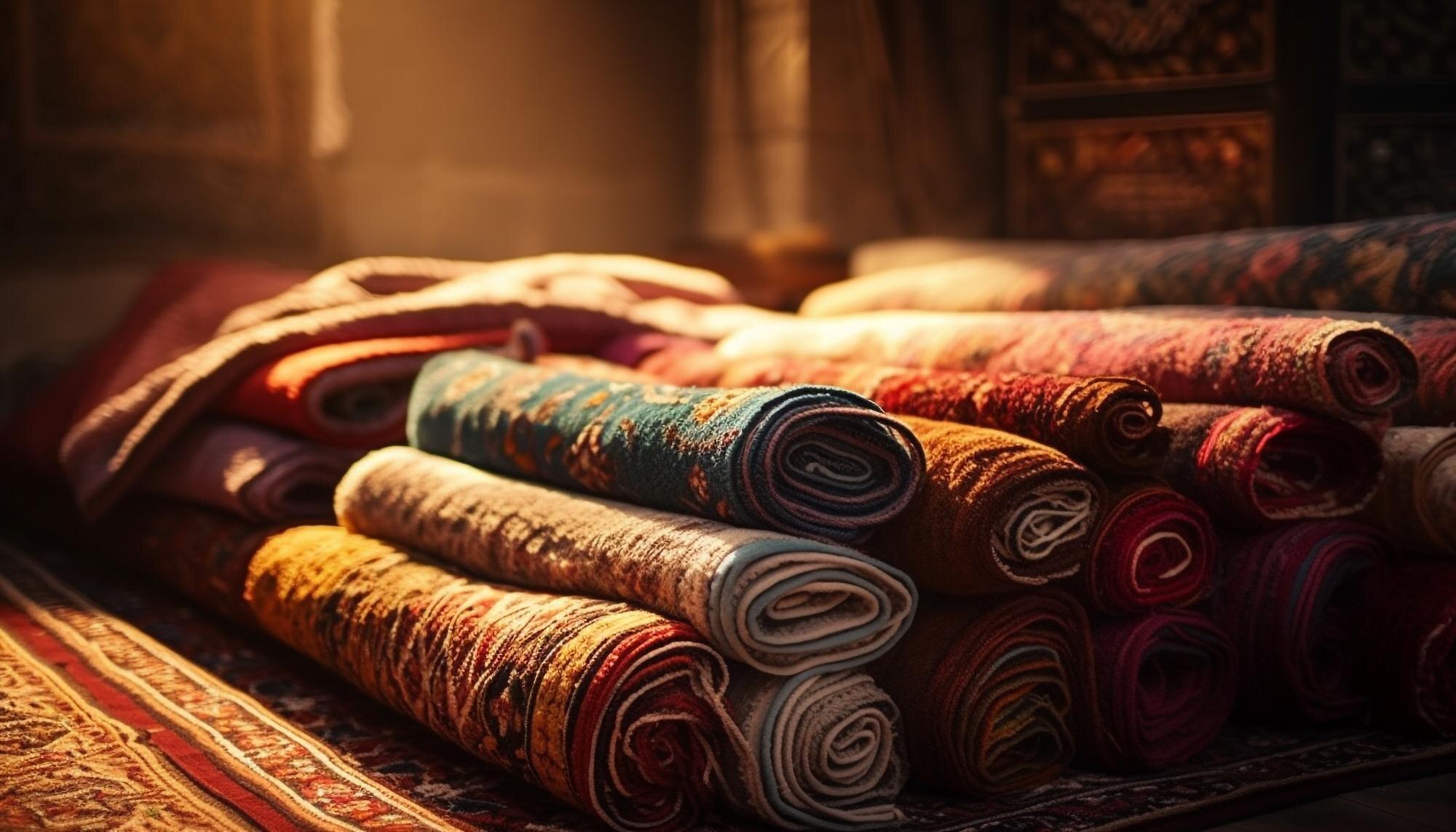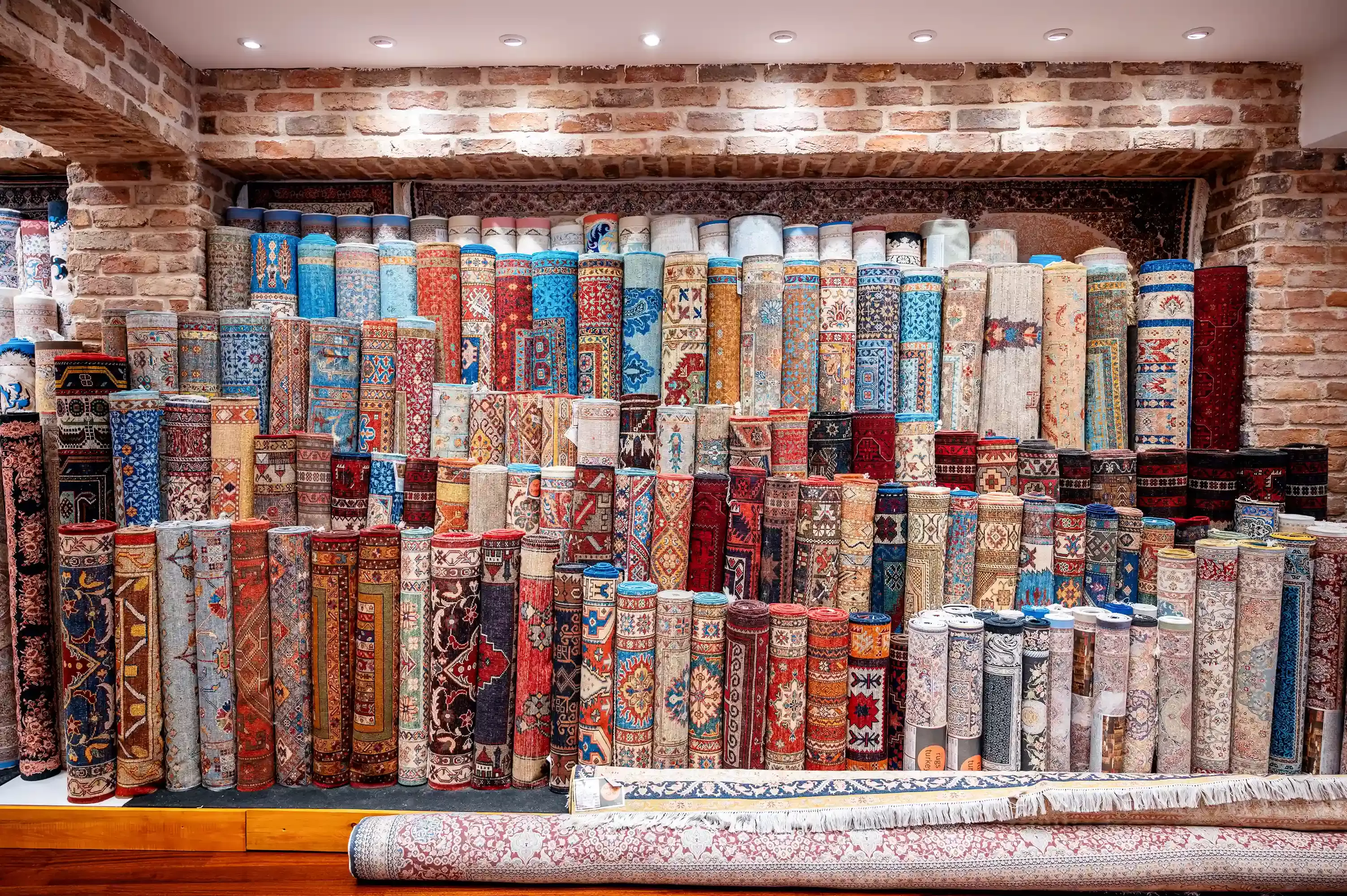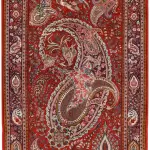History of Iranian carpet
The creativity and artistic taste of every people and society is rooted and influenced by the tradition and culture of life and the environmental and geographical records of that people, and often this taste and talent is manifested in the form of creating works of art. The art of carpet weaving is one of the arts that has been perfected in the land of Iran over time, and the taste and talent of Iranians have found an opportunity to express themselves in the field of this art. The history of the weaving of the most basic rugs and carpets can be known from the time when humans started to build shelter for themselves, and the weaving of the first type of rugs coincided with the raising of livestock and the use of their wool. Carpet weaving, like other human achievements, has always been evolving and has always been intertwined with human civilization, to the extent that it is said that no art has evolved like carpet art. In fact, the carpet as an underlay has evolved through four styles including: rubbing (felt carpet), weaving (flat carpet), knotting (knotted pile carpet), the final product of which is a carpet, and finally It has been machined (carpeted).
The first examples of Iranian carpets
Referring to historical sources (including the Shahnameh), it can be said that the beginning of carpet weaving in Iran dates back to the time of Thahmoreth, the first king of the Pishdad dynasty in Iran. Historical investigations and discovered artifacts from Hesar Hill, Burnt City and Alborz mountain range, where tufted carpet weaving was prevalent in the Iranian plateau in the Bronze Age (about 2500 to 1500 years BC). But when it comes to the history of Iranian carpets, scientific sources always mention the Pazirik carpet as the first valuable example of the ancient Iranian carpet weaving art. The beauty, texture quality and fame of this carpet caused many experts to consider Iran as the cradle of carpet weaving in the world. In 1949, the famous Pazirik carpet was discovered by Professor Rudenko in the frozen graves of the desert dwellers in the Pazirik region of Mongolia. This carpet dates back to the 4th and 5th centuries BC, its dimensions are about 2 x 1.83 meters and it is woven with 3600 knots per square centimeter, in brown, copper and light green colors. In fact, the conditions of freezing in the place of storage of this carpet caused it to remain healthy to a large extent and to be safe from the destruction of biological factors.
The similarity between the border images of the Pazirik carpet with the common forms in the Achaemenid period and the motifs of Persepolis has caused many experts, including Professor Rudenko, to consider it as belonging to Iran and to estimate the time of its weaving in the Median or Achaemenid period. This exquisite carpet is now kept in the Hermitage Museum in Leningrad.
Among the other famous Iranian carpets is the Bahar Khosrow carpet, which is also mentioned in Tabari's book of history. In the descriptions of this book, it is stated that: "There is an excellent Iranian carpet called "Bahar Khosrow" in the Palace of Tisphon, its length is 450 yards and its width is 90 yards." The name of this carpet is due to its role, which represents the rest of the carpet decorated with flowers, birds, and flowing streams. According to one theory, this carpet is the same jeweled and famous "Baharestan" carpet that is mentioned in the sources and in the defeat of Yazdgerd III, the last Sassanid king, the Arab troops took it as booty and cut it to pieces.
After this period, the course of evolution and development of Iranian carpets can be examined by referring to historical books and sources, as well as drawings and paintings left over from different periods. Because due to the nature of the carpet and the natural fibers used in its texture, it is destroyed over time under the influence of biological factors and is not durable. Therefore, after the Pazirik carpet, which remained intact due to preservation in freezing conditions, no exquisite and intact example of Iranian carpet is available before the 10th century of Hijri.

The peak of carpet art in Iran
The peak of prosperity and prosperity of carpet weaving in Iran was during the Safavid period. In fact, in this period, due to reasons such as the penetration of the carpet weaving industry from the village to the cities, the expansion of the carpet trade, and the support and encouragement of the government and especially the art-loving Safavid kings from this art-craft, carpet weaving grew and developed significantly, in a way that the Iranian carpet During this period, it became a luxury and premium product at the global level. By inviting artists to the city of Tabriz (the capital at that time), Shah Ismail Safavi turned this city into the artistic and cultural center of Iran. The centrality of Tabriz is noteworthy due to the presence of great artists such as Behzad and Sultan Mohammad, as well as commercial affairs and buying and selling carpets in this period.
Like his father, Shah Tahmaseb Safavi also supported artists and even he was very interested in designing and painting carpets. During the period of this king, the Iranian carpet reached its peak of perfection in the delicacy of the texture and the beauty of the pattern, and it was always sent as a precious gift to the neighboring countries. Some of the most famous Iranian carpets, including the rug known as "Sheikh Safi" were woven during the Safavid era of Shah Tahmasab. The Sheikh Safi carpet, which is now kept in the Victoria and Albert Museum in London, is one of the most exquisite carpets in Iran. This exquisite lachak and toranj carpet was woven to decorate the tomb of Sheikh Safiuddin Ardabili, the founder of the Safavid dynasty in Tabriz.
Shah Abbas Safavi made a lot of effort to elevate this original and traditional art and this support and effort led to investment in the carpet weaving industry. The Safavid kings were very interested in this art and it was perhaps the first time that carpets made their way from small houses to large workshops. With the creation of such organizations, carpets suitable for royal palaces were woven using silk and gold threads and woven with beautiful and slim patterns and branches, gardens and the Dutch hunting ground of the buyers, and English, Portuguese and Dutch companies were among the buyers of these carpets in the Safavid period. . Thus, what we see today in the name of carpet export is actually handing over a legacy from past generations.
The history of Iran in the Afsharian and Zandian periods
The history of Iran during the Afsharian and Zandian periods has always been associated with the occurrence of internal and external wars; Therefore, the field of attention to art was not the same as in the Safavid era. However, there are reports from the Afsharian period that refer to the presence of carpets in the coronation ceremony of Nader Shah in the Mughan plain, and also the availability of carpets in the Bandar Abbas market. Also, the carpet weaving orders to cover Imam Ali's shrine (AS) and Yerevan church are related to the Afshar period. From the Zandiyeh period, the reports of travelers and historians such as "Sir Jan Malcolm" refer to the existence of extensive carpet weaving workshops in the cities of Yazd, Kashan, Tabas and various cities of Khorasan, and the existence of two dated carpets related to this period. Examining the characteristics of carpet weaving in the Afshariye and Zandiyeh period states that during this period, the weaving of large and decorative carpets has decreased significantly, and carpet weaving has become a profession that is more popular among villagers and nomads.
The influence of Qajar rule on carpets
The long-term rule of Qajar (1210 to 1343 AH) has caused important and significant changes in the political and social history of Iran, and the effects of this change and transformation in Iran's carpet weaving industry are also very wide. During the Qajar rule, the arts received better support and supervision, and carpet weaving in particular was at the center of attention. In fact, the carpet was so important in the social culture and life of Iranians during the Qajar period that its reflection can be clearly seen in the remaining paintings and photographs from the Qajar period. With the establishment of extensive political and commercial relations with European countries and the influence of social and industrial developments in the West, it caused the attention of Europeans to be drawn to the art and craft of carpet weaving in Iran.
During this period, Iranian merchants - especially the merchants of Tabriz city - collected and exported old carpets. After some time, due to the lack of old carpets in the market, carpet manufacturers first in Azerbaijan and then in other areas prone to carpet weaving, such as Sabzevar, Mashhad, Arak and Kerman, began to produce carpets using the designs and patterns ordered by the merchants. It was at this time that foreign investors and companies made extensive investments in the field of production and export of this craft. Among the most important of these companies are: the English-Swiss company "Ziegler", the Italian-English company "Castelli Brothers", the trading company "Eastern New York Carpet", the English-Greek company "East London Carpet Company", etc.
The progress of chemistry led to the appearance of various colors in the field of fiber dyeing in the middle of the 19th century. Among these colors, we can mention indigo colors, which entered Iran in this period, despite the efforts of the Qajar government to prevent the entry and use of these artificial colors in Iran. Also, in this period, due to the expansion of communication with the West, there were changes in the field of carpet design, and an example of this is the motif of the Mohammadi flower or Farang flower, which can be seen in the carpets of this period. It should be mentioned that the order of carpet weaving with designs liked by Europeans to Iranian weavers was also effective in this change.

Iranian carpet in the contemporary era
Among the most important actions of the Pahlavi period in the field of supporting the carpet weaving industry was the establishment of Iran Carpet Company in 1314 AH. Also, during this period, the government tried to stop the colonization of children and carpet weavers by employers by passing laws, but due to the harsh conditions of carpet weaving and the dispersion of its workshops throughout the country, not much success was achieved in this field. Also, the most accurate statistics recorded in the field of carpet weaving, the number of weavers and active workshops of this industry, was obtained during the Pahlavi period and through the general population and housing census in 1355 AH.
Carpet inventor
The inventor of the carpet weaving standard known as "sanitary rug" by engineer Ebrahim Rajabi in 1350, and its registration in the encyclopedia of industrial hygiene and protection in Geneva, is one of the notable measures in the Pahlavi period. The use of double knot as well as non-knot weaving, which are among the disadvantages and flaws of handwoven carpets and cause the quality of the final product to decrease, also became popular in the east and southeast regions of the country during this period.
Handwoven carpet events in the Pahlavi period
Acknowledging and using the "meter" unit in carpet transactions, producing and publishing checkered papers for map design, issuing birth certificates for woven carpets, collecting old plans and maps, as well as forming a carpet and map commission, are among the positive and significant events in art. - The hand-woven carpet industry is in the Pahlavi period, which shows important developments and the support of carpet weaving by the men of this period. But on the other hand, the introduction of machine-made carpets to Iran during the second Pahlavi period was one of the problems that its spread in different regions of the country caused a decrease in the demand for hand-woven carpets.
The establishment of the "Iranian Carpet Museum" in 1356 AH, with the approach of researching the historical and artistic background and collecting all kinds of exquisite Iranian handwoven carpets and holding temporary and permanent exhibitions are among other positive actions of the Pahlavi period.
The carpet industry in 1357 coincided with the establishment of the Islamic Republic
With the establishment of the Islamic Republic in Iran in 1357, followed by the formation of this institution's construction and management of the art and craft of handwoven carpets, carpet production cooperatives were gradually formed and supported by the government. With the formation of the Ministry of Agricultural Jihad in Iran, units named "Carpet Research Center" and "General Administration of Carpet and Handicrafts" were established, and the extensive activities of these two institutions accelerated the process of handwoven carpet production in these years. According to registered statistics and reports, the amount of handwoven carpet production in 1373 was about seven and a half million square meters, which is the highest amount of Iranian carpet exports that has been reported so far. Also, referring to the recorded reports, Iran's carpet exports in a sixteen-year period (from 1357 to 1373) accounted for an average of 39% of the country's non-oil exports, but since then, handwoven carpet exports have decreased. .
Carpet as a new knowledge in the country's universities
Also, in 1374 and with the approval of the Ministry of Science, the academic field of carpet entered the university as a new knowledge for old art. Creating insurance for home carpet weaving artists, the introduction of computers into the carpet world and its use, especially in the field of carpet design, the transfer of carpet designs and maps, the weaving of unique carpets, as well as the issuance of birth certificates for carpets, among other effective measures in the field of preservation, growth and improvement. These ancient heritages have been in recent years.
You can inquire about Buying Handwoven Carpets , Buying Handwoven Kilim and Mats , and Buying Handwoven Pictorial Rug Tableaus online from the Hoveida Carpet Store and register all your orders and Wherever you are in the world, deliver it to the desired address in less than 4 working days.
If you are interested in reading other articles in the field of Handwoven carpets or Handwoven Pictorial Rug Tableaus , please refer to Hoveida Carpet Commercial












